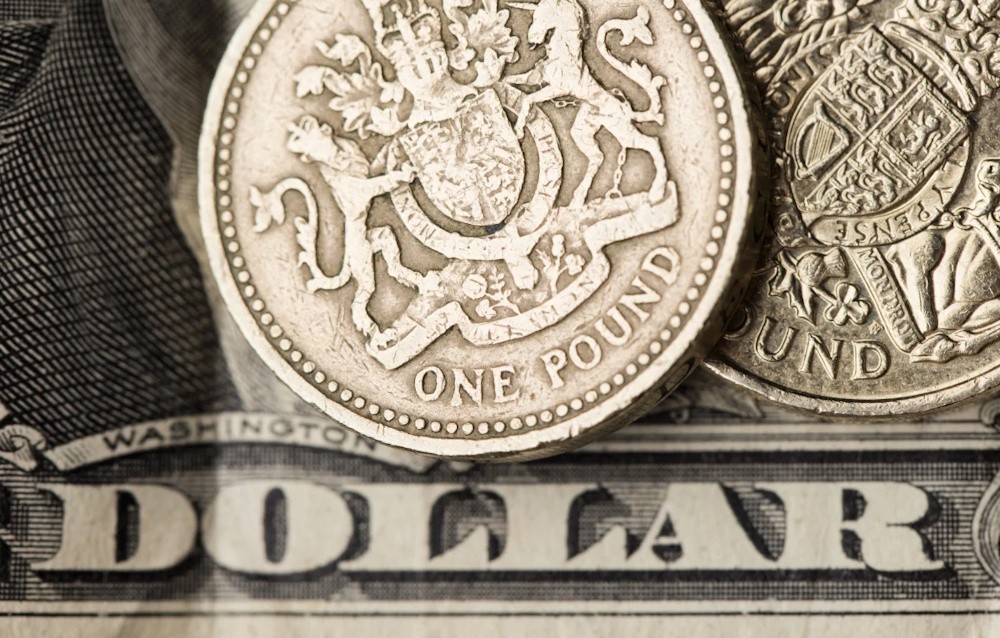The GBP/USD pair remained around 1.3287, marking its lowest point since mid-October, before experiencing a slight recovery on Friday following stronger-than-anticipated UK retail data that momentarily stabilized market sentiment. Despite the rebound, the pair concluded the week with a decline of 0.85%, underscoring the influence of dollar strength and differing rate trajectories on market direction. U.S. inflation continues to be the primary influence, as the annual CPI for September increased to 3.0%, up from 2.9% in August, yet still below expectations. Core inflation has slightly decreased to 3.0%, which continues to exert pressure on the Federal Reserve to implement a widely anticipated 25-basis-point cut at the upcoming October meeting, followed by another reduction in December. Sources currently indicate a 94.5% likelihood of a rate cut this month, along with a 92% probability of an additional reduction before the end of the year. This scenario continues to provide support for the greenback, even in the context of slowing price growth. The British economy presented an unexpected positive outcome, with UK retail sales volumes increasing by 0.5% in September, contrary to forecasts predicting a 0.2% decrease. The increase came after a 0.6% upward revision for August, representing the most robust consecutive growth since 2022. The resilience of consumer spending, particularly in food and household goods, provided a short-term boost to the pound.
Nonetheless, overall economic indicators continue to reflect weakness — the manufacturing PMI indicated a contraction, although it was at its slowest rate in a year, while services activity remained unchanged. Sources observed that “September likely marked the low point for UK growth,” yet the absence of steady momentum indicates that any recovery in sterling may be fleeting. Ongoing structural inflation and stagnant productivity are limiting the Bank of England’s ability to adjust its policies, resulting in GBP/USD being heavily influenced by U.S. macroeconomic trends. The Federal Reserve’s forthcoming meeting will be crucial. While no new projections are anticipated, focus will be directed entirely on Chair Jerome Powell’s demeanor. As the Fed is expected to reduce rates to a 3.75–4.00% range, market participants will closely analyze any indications of dovish language concerning inflation or labor weakness. A potential conclusion to quantitative tightening may lead to a slight depreciation of the dollar; however, the overarching trend continues to be bullish unless the Fed clearly indicates a more substantial easing cycle. Simultaneously, GBP/USD is limited by the expanding policy divergence between the Fed’s slow easing and the Bank of England’s extended hold, with UK rates expected to remain stable until at least mid-2026. UK fiscal challenges persist, negatively impacting investor confidence.
The government’s borrowing requirements, which have exceeded expectations, alongside stagnant wage growth and high energy costs, are placing significant pressure on sterling. Oil prices have experienced a significant increase due to geopolitical tensions, resulting in higher import costs for the UK and exacerbating the current account deficit. The interplay of high energy import costs and subdued growth has heightened the view that the UK economy is more susceptible to external shocks compared to the U.S. economy. The resulting imbalance has intensified selling pressure in GBP/USD, with traders progressively focusing on 1.3150–1.3100 as the forthcoming support zone if U.S. yields maintain stability above 4%. GBP/USD is encountering a critical juncture around 1.3300, with resistance positioned at 1.3365 (50-day moving average). Momentum continues to show weakness, and the RSI has not managed to recover the 50 midline, indicating a lack of strong buying conviction. Support is established at 1.3200, with subsequent levels at 1.3150. A breach below this point may reveal 1.3000, a key psychological area associated with the lows from August. On the other hand, a close above 1.3365 would pave the way toward 1.3480; however, this scenario hinges on the presence of softer U.S. data and a resurgence of UK optimism — a combination that appears improbable in the near term due to the divergence in policy and growth.
The overall sentiment for the pair continues to lean bearish, as market participants are inclined to sell on rallies until more definitive indications of a lasting change in Fed tone or improved UK macroeconomic data become apparent. Investor Outlook: Policy Divergence Supports the Dollar. The relationship between moderating U.S. inflation and resilient growth supports the dollar against its peers. The economic momentum in the UK, although stabilizing, continues to exhibit fragility in comparison to that of the U.S. In this context, speculative flows persist in favoring dollar strength as the allure of carry trades remains robust. Unless the Bank of England indicates an unexpected hawkish position or there is a significant rebound in UK inflation, the most likely trajectory for GBP/USD appears to be downward. The pair remains constrained beneath 1.34, with risk sentiment, Federal Reserve communication, and fluctuations in global energy markets poised to influence short-term movements. GBP/USD has declined to 1.3287 as the anticipated Fed cut approaches, while the surge in UK retail sales has not been sufficient to alter the prevailing bearish trend.

